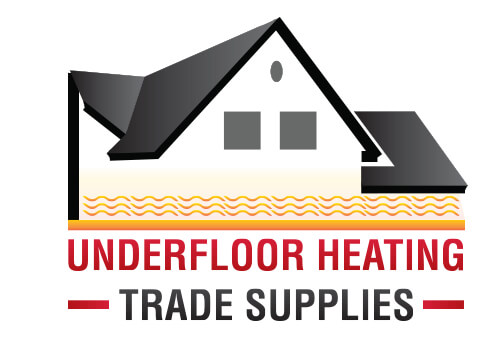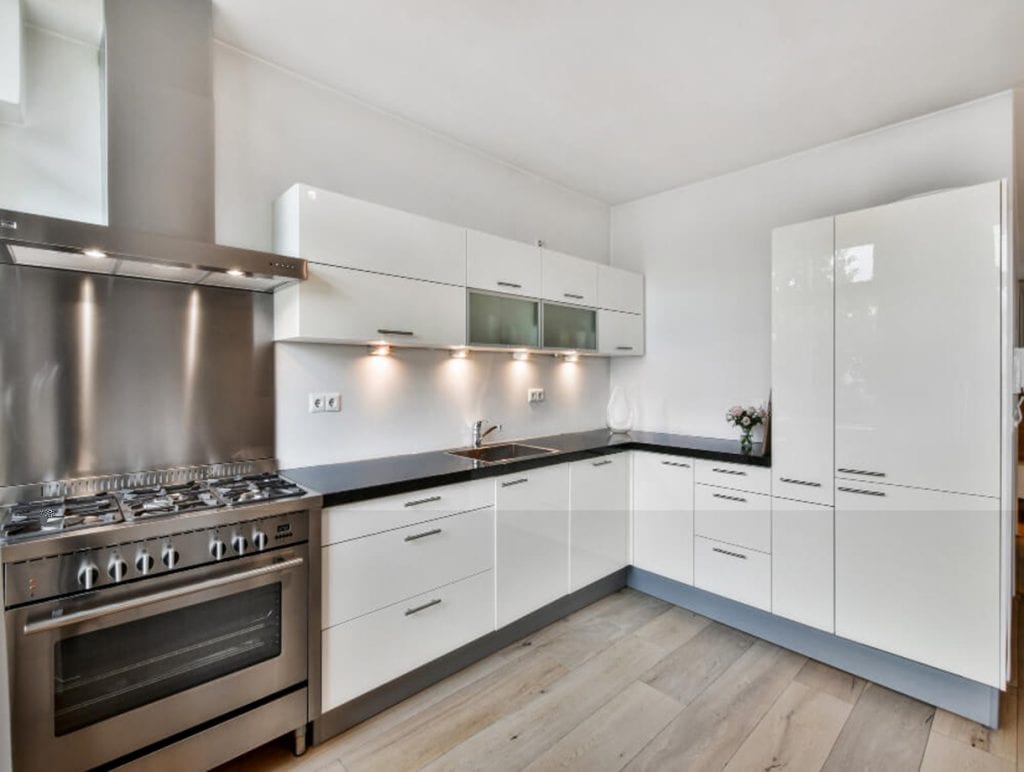
Despite having ovens and microwaves located in them, kitchens can sometimes be one of the coldest rooms in the house. So what are the best ways to heat a kitchen?
During colder months, keeping your kitchen comfortably warm can become a pressing concern, especially if you have tiled flooring, for example. In this article, we will look at the best kitchen heating options, from underfloor heating systems to innovative heat-storage cookers and more. By the time you finish reading, you will wish you had thought about heating your kitchen sooner, and realise the timeless benefits a properly heated kitchen can offer.
Key Points:
- Explore the benefits of underfloor heating in kitchens.
- Can radiators work just as efficiently in kitchens?
- Understand what plinth heaters are.
- Choose a kitchen heating solution that is right for you and your budget.
1. Underfloor Heating
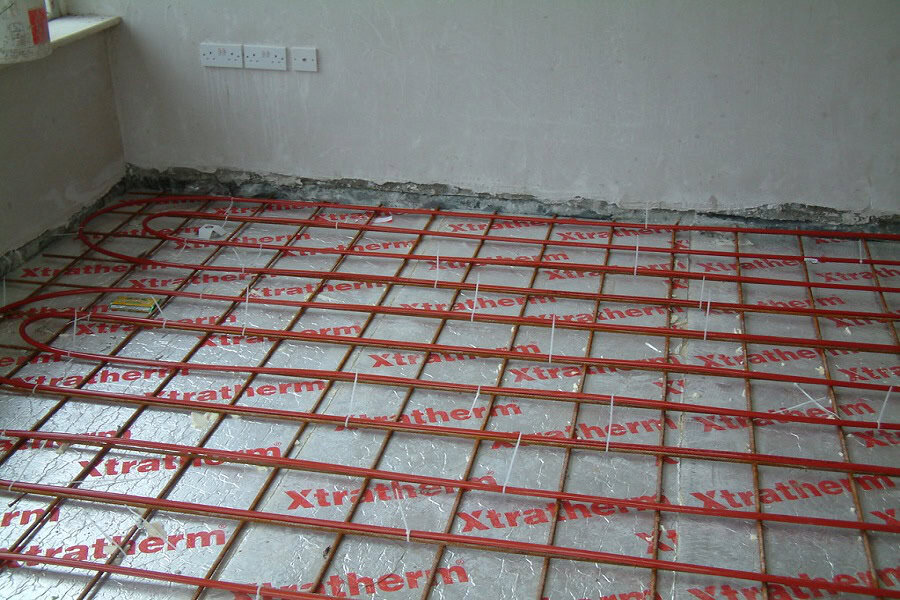
When considering kitchen heating ideas, underfloor heating (UFH) is often the first port of call due to how versatile it is with different flooring types.
Underfloor heating systems effectively distribute heat efficiently and eliminate the hot spots commonly associated with radiators. For those that prefer to walk barefoot, underfloor heating can keep your flooring just as toasty as you would find it in your bathroom.
You do not even need to worry about this heating system taking up space since it will be located beneath your flooring, allowing you to maximise wall space for cabinets and other appliances without bulky radiators obstructing.
Furthermore, UFH promotes a healthier kitchen environment by minimising air movement, which reduces the circulation of dust, especially beneficial for those with central heating allergy symptoms. It also lowers the risk of burns or injuries that might occur with exposed hot surfaces or edges of conventional heaters.
Choosing Between Wet and Electric Underfloor Heating
Before installing UFH, you should consider which underfloor heating system is right for you. The options are:
- Electric underfloor heating: Efficient for smaller kitchens or retrofitting projects.
- Water underfloor heating: Better for larger kitchens or new builds; works alongside boilers and heat pumps.
Learn the pros and cons of underfloor heating
2. Radiators
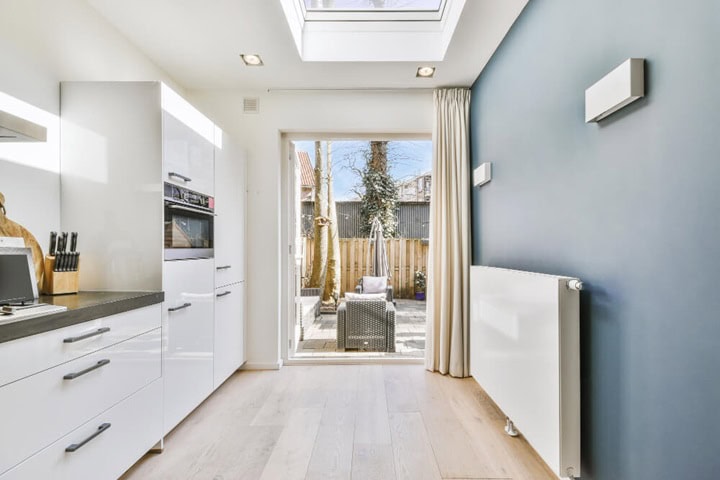
For those updating an existing kitchen, radiators remain a common and effective kitchen heating solution. They can rapidly warm a room, typically within 20-30 minutes, making them a practical choice for producing heat quickly. Today’s market also offers aesthetically pleasing designer radiators that can match any kitchen style, from modern to rustic.
However, radiators aren’t without their problems: They can create uneven heating across the space (hot and cold spots), since heat will only be produced from the radiator itself; this could result in one side of the room feeling warmer than the other, which is particularly noticeable in larger, open-plan kitchens.
Additionally, radiators can take up wall space, which is often a requirement in modern kitchen designs. Vertical radiators might prevent this issue over horizontal models by using space more efficiently. However, this could still impact where you place furniture or cabinets. Furthermore, radiators require regular maintenance to keep them clean and dust-free.
3. Plinth Heating
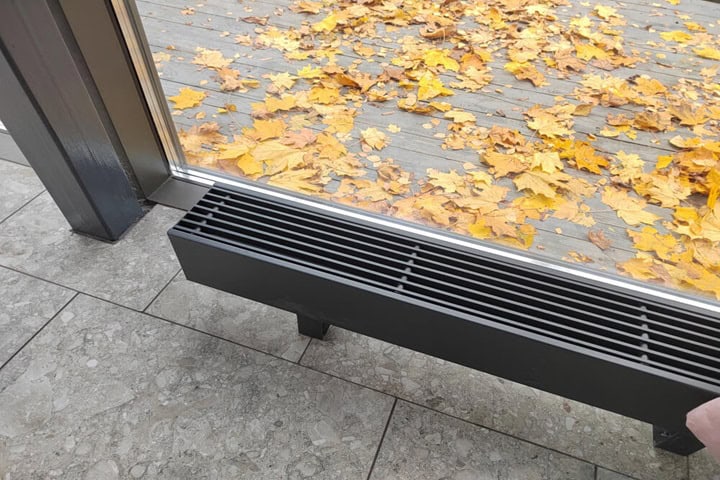
Plinth heaters provide a clever alternative to other modern kitchen heating ideas, in that they can be found in the often-overlooked space at the base of kitchen units.
These come in two varieties:
- Hydronic: these connect to the central heating system. These are more cost effective and produce a higher heating output; better for larger kitchens.
- Electric: more expensive in the long term, but are easier to install and works better in smaller kitchens.
Both types of plinth heaters are designed to blend seamlessly with your kitchen aesthetics and can be an efficient way to supplement your main heating system, helping to eliminate cold spots.
Expert tip: Be aware that plinth heaters can emit a gentle blowing sound when in use, which is generally quiet but noticeable in a silent environment.
4. Discreet Skirting Heating
For those that want a less obtrusive kitchen heating solution, skirting heating systems offer an innovative solution. These systems are integrated into skirting boards or can be installed as a ‘plinth’ heater at the base of units. Skirting heaters are available in both ‘wet’ and electric versions, allowing them to be integrated with existing boilers, heat pumps, or as standalone units.
Skirting heaters are particularly beneficial in kitchens where wall space is limited. They can provide a continuous source of heat along the perimeter of the room, ensuring that heat is distributed evenly without sacrificing design elements or space. The infra-red radiant heat they emit is often sufficient to warm the entire kitchen area and can be custom-length up to 6 meters to suit any room size.
5. Heat-Storage Range Cookers
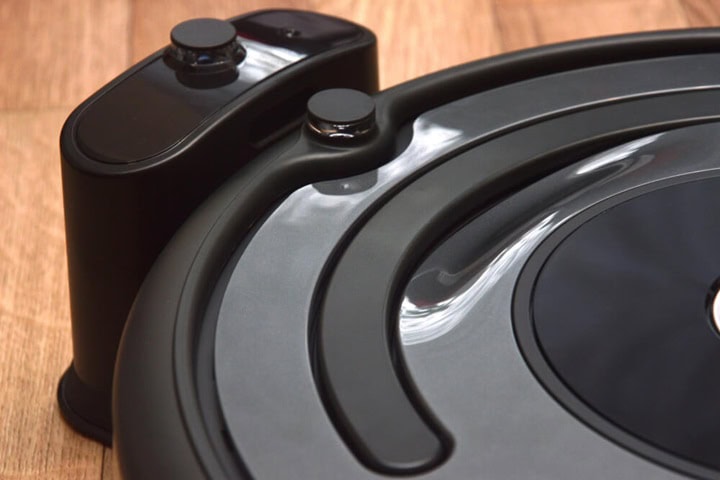
Heat-storage range cookers are an excellent kitchen heater idea, especially for those looking to integrate cooking and heating into one robust appliance. These cookers vary widely in functionality—from models solely designed for cooking to those capable of heating entire homes and providing hot water.
Modern heat-storage cookers are versatile, too, running on electricity, gas, LPG, oil, or solid fuels, and equipped with sophisticated controls that manage heating, cooking, and water heating independently.
However, heat-storage range cookers can make the kitchen uncomfortably warm during summer. Thanks to advances in technology, contemporary models now offer more control, including timers and adjustable settings, making them a more practical kitchen heating solution all year-round.
6. Kitchen Stoves and Fireplaces
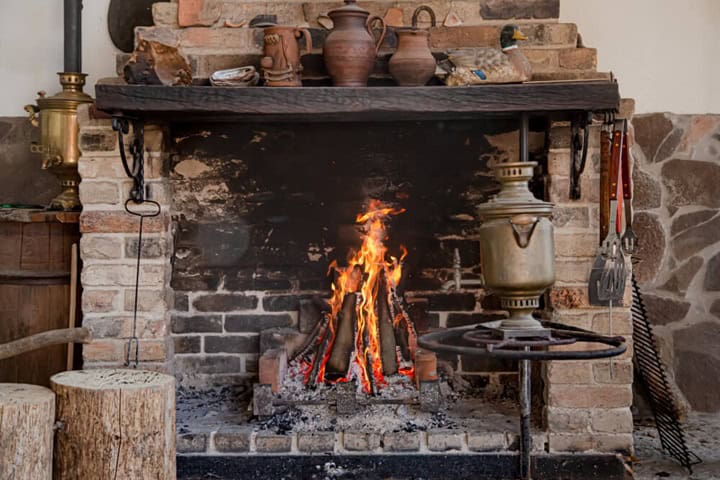
Adding a stove or fireplace can significantly improve your kitchen, especially in open-plan spaces. If you already live in an old house, you may already have one of these installed. Kitchen stoves serve as both a heat source and a visual centrepiece, enriching the aesthetic and warmth of the area.
Stoves are typically more efficient at heating than traditional open fireplaces and come in various designs that can be freely placed around the kitchen without needing a built-in fireplace surround.
The choice of fuel—wood, gas, electricity, or even bioethanol—offers flexibility depending on your preferences and the practicality of the installation. Both gas and electric options are easy to use and can provide plenty of heat, whereas wood-burning stoves offer the undeniable charm of crackling logs, perfect for a cosy winter ambiance whilst reading a book or enjoying a glass or wine.
7. Heated Glass
For those seeking a modern twist on kitchen heating solutions, heated glass is a high-end option that combines style with functionality.
Ideal for kitchens located at a separate corner of the house, considering a glass extension can significantly improve natural light and provide unique heating benefits. Heated glass panels use a metal oxide coating to generate warmth through electricity, effectively heating the room while preventing condensation—a common issue with traditional windows in cooler climates.
Heated glass not only elevates the room’s aesthetics but also ensures it remains warm and inviting throughout the year. Though it is the priciest option among these kitchen heating ideas, its range of benefits of brightening and warming the space may justify the investment, especially in architecturally conducive settings.
Choosing the Right Kitchen Heating Solution
With a variety of kitchen heating ideas available, selecting the right one can be daunting, especially for a project as big (or small) as a kitchen. Whether you prefer a multifunctional heat-storage range cooker, the aesthetic appeal of a stove, the innovative technology of heated glass, or the hidden secrets of underfloor heating beneath your floor, each option offers unique benefits tailored to different needs and kitchen layouts.
If you’re uncertain about which heating solution best suits your kitchen, contact us today and see how we can help.
FAQs
What should I consider when choosing a heating system for my kitchen?
When selecting a heating system for your kitchen, consider factors like the size of the kitchen, the existing heating infrastructure, energy efficiency, and your budget. It’s also important to think about the flooring type, as some heating systems pair better with certain materials. Finally, consider the installation and long-term running costs, opting for a system that provides comfort and efficiency without excessive expenditure.
Sources
Derwin, N., (2024) 8 Types of Stoves and How to Choose the Best One for Your Kitchen. Martha Stewart. [online] Available at: https://www.marthastewart.com/types-of-stoves-8696595 [accessed 20/03/2025]
